Skip ahead
- A Word About Using This Guide
- What is SEO for Wedding Photographers (And Not Only Them)?
- SEO Tips for Photographers To Rank On Google
- Setting Up Your Website For SEO Success!
- Let's Talk Keywords!
- Time to Explore On-Page SEO
- All About Image SEO
- Use Blogging To Your Advantage
- Local SEO
- Link Building for SEO
- Let's Get Social!
- Reporting
- Collaborate with Your Peers
- Collaborate with Influencers
- Have a Process for Gathering Testimonials
- Use Your Expertise to Write a Guest Post
Confused about SEO for photographers? Do you have a beautiful website and content you spent hours writing? Do you feel like your website is at its best, yet it's not generating any business or inquiries for you?
Have you ever wondered what would happen if you could redirect more users to the website and get more business? A good-looking website and rich content won't do your business any good if no one is reading it.
If you have a photography business, SEO can be crucial in getting you more inquiries and relevant traffic month over month. But, SEO for photography businesses can be tricky to understand and execute because you're a photographer, not a digital marketing expert.
With this easy to follow step by step guide, we aim to help you understand the basics of SEO for photographers, take the complicated terms out of the picture, and help you understand how you can optimize your photography website for search engines and draw in relevant people to check out your services and reach out to you.
Let's uncomplicate SEO marketing for photographers.
A Word About Using This Guide
SEO is a vast and very complex domain, and no one can really know everything about it. Moreover, the algorithm is ever-evolving, and even Google's top experts admit they have a hard time keeping up with the changes.
The guide is split into easy to execute steps, and we've used several examples to make sure you understand what's required to achieve the desired ranking results for your photography website.
We've tried to keep the guide simple and include information that is the most beneficial for your business and will bring you the most ROI for your efforts.
The guide is very comprehensive and contains a lot of information that will take some time to digest. We suggest going through it slowly and one step at a time so you don't get overwhelmed.
What is SEO for Wedding Photographers (And Not Only Them)?
It's obvious to start with the very basics, introducing you to the concept of SEO, aka Search Engine Optimization.
A search engine is where you, as a user on the internet, search for information, and it gathers that information from the internet and displays it for you instantly.
Search engine optimization is simply the steps you take to ensure that your website pops in the top results if someone searches for services relevant to wedding photography or any other type of photography.
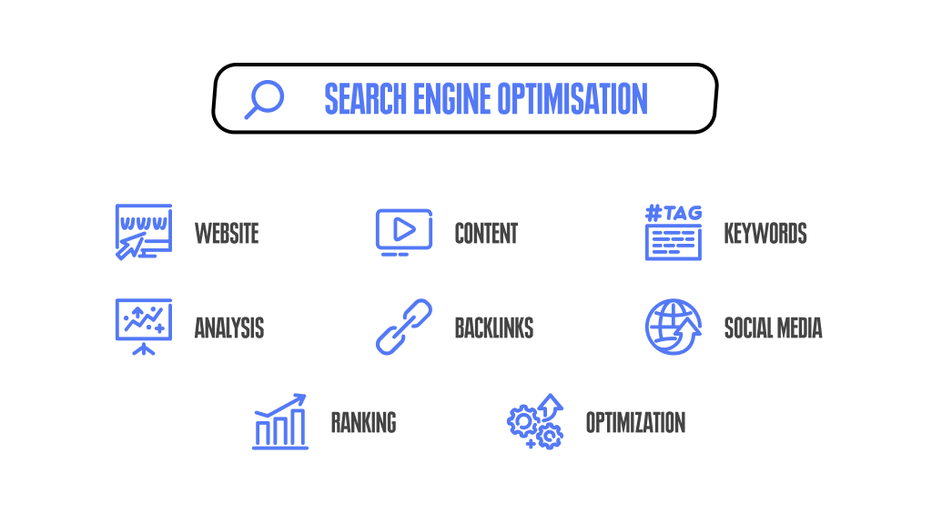
SEO is much more than keywords: it involves a number of complex, carefully planned out strategies.
Indexing Vs. Ranking
Indexing simply means that Google has found your website and has added it to its database. A website is not on Google's radar until or unless it's indexed. This also means that every time you update your photography website with a new webpage or a blog, Google needs to index it, or else it doesn't exist for Google.
This is the first step of any kind of SEO for photographers. If a website is not indexed, it cannot rank either.
Here's how you can check if a website is indexed or not
- Go to Google.com
- Type "site:yourdomain.com" (remove commas and add your website URL)

This is the simplest way to check if your site is being indexed and users can see it.
The Search Console is your best friend when it comes to indexing. You can check the indexing status of your website through it. Google has its own schedule for crawling your website and indexing new changes. However, if there are any pages like new blogs or changes to a photography service on your website that need to be indexed before Google's schedule, you can simply do that through the search console.
Here's how you can achieve that:
- Go to Crawl>Fetch as Google
- Enter the page you need indexed
- Click FETCH
- Click Submit to index
And, you're done. Now your website is ready to start ranking.
Google has a lot of sites in its index (database) that are relevant to photography. When someone searches for photography services, it starts comparing your site with your competitors. There are over 200 factors that Google considers when it decides to display search results for a single search query.
Your photography website can actually rank for more than one keyword, and it may appear at a different rank for users with a different location, device, search history, and preferences.
So how do you get ranking on Google?
SEO Tips for Photographers To Rank On Google
Getting your professional photography website to rank on Google isn't rocket science, but it isn't easy either. It requires you to be consistent and patient with your efforts, and only then will you start seeing good results and improvement month over month.
Let's look at how your website can start ranking on Google and what best practices you need to keep in mind:
Nothing Beats Quality
Google's topmost priority is the quality of content. It wants its users to find content that is beneficial for them and creates value for them. That's what it keeps in its criteria as it determines which websites to display at the top of search results. If it were to display websites with no real value on top, the searchers will be put off and might not come back.
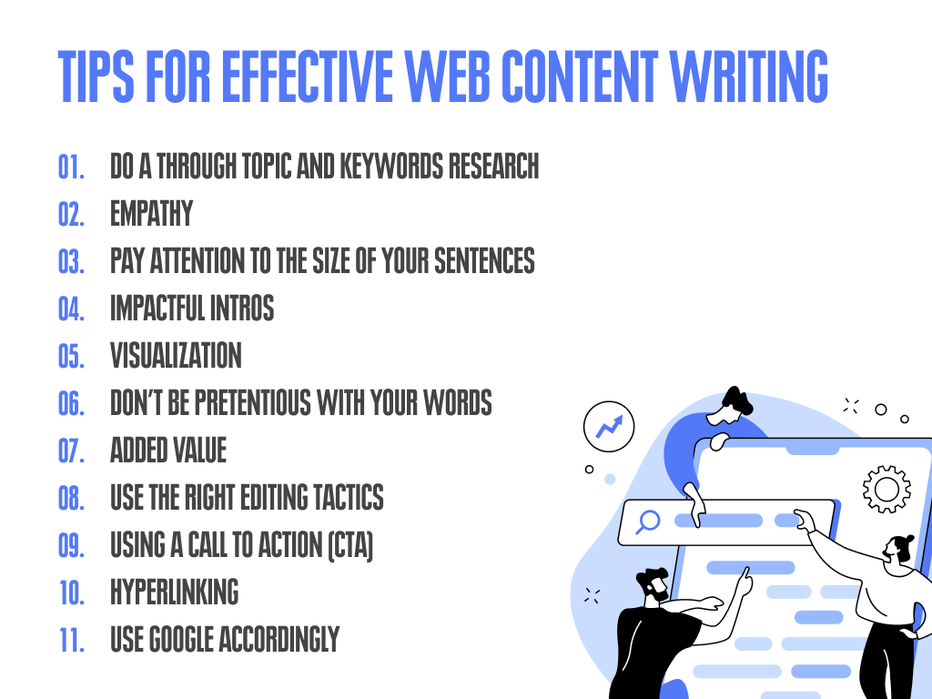
Content writing is one of the most efficient ways to engage visitors and get them interested in what your offerings are.
The goal here is to create content that really sets you apart from the rest and makes you the best, so the search engine has no choice but to display your photography website at the top.
Google has a comprehensive playbook that details what it considers to be the best content. You can go through it in detail and see if you can use some of the guidelines to optimize your website to meet Google's standards.
Begin by looking for the following things in your website content:
- Is your website at least 10 times better than the other photography websites that are ranking on Google?
- Does your website have complete and comprehensive information? If a user comes to the website, do they find all the information related to their question, or will they still need to go to another website to fully get what they're looking for?
- Is it clear what services you are offering within seconds of landing on the website, or will the user get confused?
- Is the website easily accessible and designed for all kinds of devices?
- Does the website have information available in a few clicks, or does the user have to go to extra lengths to find information?
- Would visitors view you as an authority in the industry? Does the website show information relevant to your business?
- Is your brand name in the same category as that of the keywords you're looking to rank for? Does the name reflect that it's a photography business?
Remember to write for the user and not for the search engine. Search engines adapt and evolve accordingly. If a piece of content is tailored towards users and offers value, Google will consider it for ranking.
"Writing for SEO doesn't have to be technical; focus on the user and their needs and wants, and that will prove to Google that you're an authority on the subject."
Setting Up Your Website For SEO Success!
Your website is the foundation of all kinds of marketing you will do on the internet, including SEO. It acts as the face of your professional photography business online.
Before you build the website or re-build it, there are a few things you need to map out. It's essential that you have a customer journey in mind before you begin. Where will the users land on the website? What actions will they perform on each page? How do you want them to navigate the website, and what is the call to action for each page?
Let's look at the steps you need to take at different stages to build a website that's a perfect foundation for SEO.
Choosing the best platform or CMS (Content Management System)
The very first step is to determine which platform or CMS your website is going to be built with. Google doesn't have any special preference for one kind of a CMS, but you will have trouble ranking with a CMS that has a record of issues in the past.

As you can see, when it comes to CMS platforms, the choice is plenty.
You also have to keep in mind that a CMS that doesn't allow you to make adjustments to certain elements of the website will become an issue when you are trying to rank. You need a CMS that is user-friendly and allows you some control so you can make changes for SEO purposes.
Right now, there are three CMS in the market that are good for a photography website. Let's look at them in detail:
1. WordPress
WordPress is a giant, with over 25% of the websites online using it as their foundation. It offers the most control over the website and is the ultimate CMS when it comes to flexibility for SEO purposes.
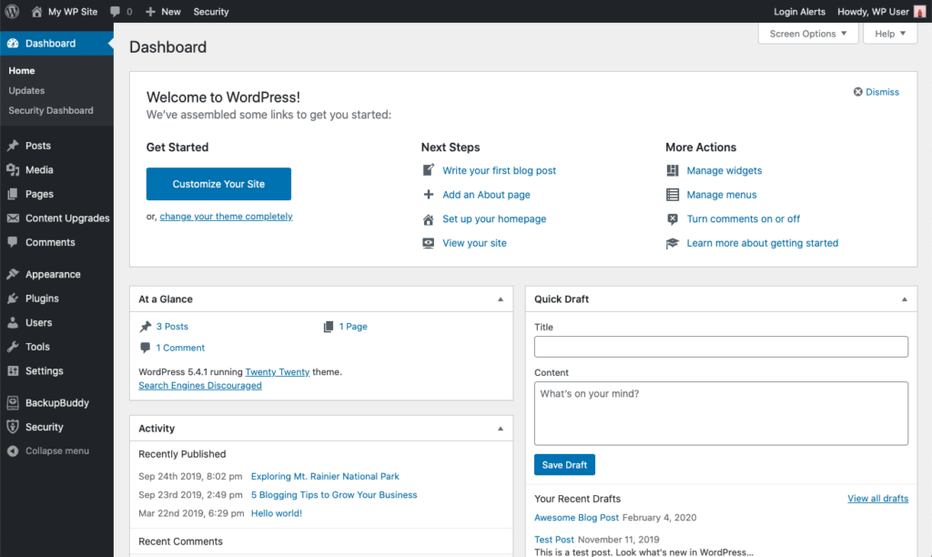
WordPress is known for being easy to use. If you want to get your business off the ground quickly, try WordPress.
It requires some effort on part of the user too though, you will have to buy a domain, hosting, and also a WordPress theme if you want to set up a website on WordPress. You will have to install security plugins and also take regular backups for the data yourself.
The technology is open-source and free so the accumulated cost is usually the same as other builders. Remember, we are talking about a self-hosted domain and not a WordPress blog.
2. Showit5
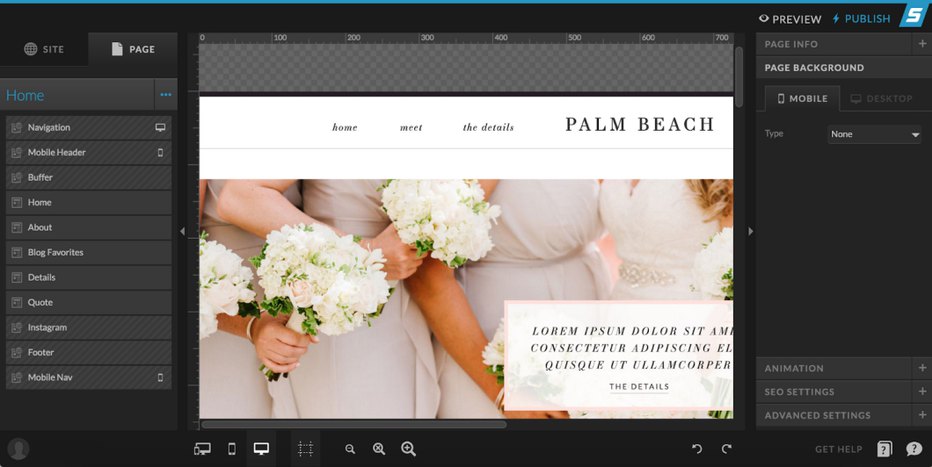
Showit5 is not as flexible as WordPress, but there’s still a lot you can do on this platform.
Consider Showit5 as a limited version of WordPress. It doesn't have the same flexibility as WordPress but the design options are beautiful and that is a plus when it comes to ranking as good designs and user-friendly structures are a key element Google looks at when deciding whether a website should rank or not.
3. Squarespace

Squarespace is a simple platform that has everything you need to start building your presence online.
Squarespace is the easiest to use out of all three and can be set up quickly. It takes care of the hosting, domain, and backups and the technical support team will guide you through each step. Its SEO functionality is basic and it will support basic SEO practices but it doesn't have the same flexibility as that of WordPress.
Our Verdict on the Best Among The Three:
"If we had to suggest one CMS that is perfect for SEO and aids SEO for photographers. We would say WordPress."
Once you enter the WordPress world, you will realize that not everything is as cookie-cutter as it seems. Each theme and each hosting provider is different.
When it comes to themes, most of them are actually pre-built templates that won't really give you much control over what you can and cannot do. Popular examples of this would be themes like ProPhoto and Flothemes which are very popular amongst photographers.
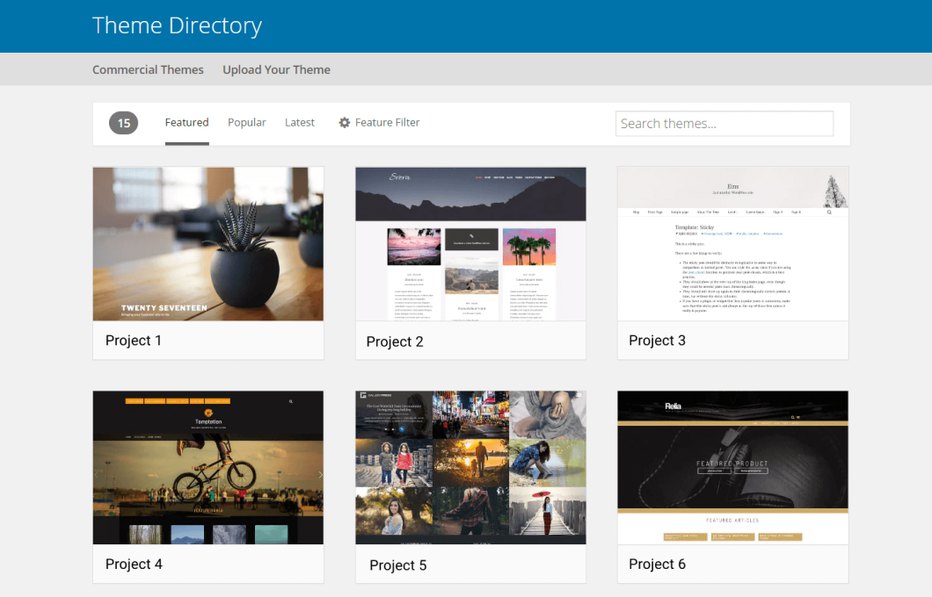
You can always choose a template for your website design, however, a custom design is always the better option.
Other themes curating websites like Themeforest have themes that have demos and templates of all kinds of industries imaginable but the website builders on these are usually outdated and clunkier which can become a nightmare if you aren't a developer.
Your best option is to get a light theme like Hallo or Astra and use the Elementor or Elementor Pro to give it the flexibility it needs while being super easy to use.
Your Blog Should Be Within Your Website
Many people on the internet make the mistake of having a website and their blog as separate entities. Photographers in the past usually had a website on one platform and a blog on the other but you don't need to do that anymore.

Blogs are the easiest way to boost traffic to your site for free.
Your website and your blog should be under the same domain and not two separate properties. Your blog should be a sub-directory of your website and have different content than the website itself. It should appear like this in the search bar: yourwesbitename.com/blog
Go for One Website Only
When it comes to websites, the concept of "the more the merrier" really doesn't apply. If you have two domains, you're shifting the attention of your users and also splitting your authority between the two online. And, you don't want to do that.
Other reasons aside, if you start working on building domain authority for more than one website, you will be exhausted. Domain authority comes from backlinks. Backlinks are links placed on other websites that redirect the user to your website. Google doesn't really advertise this metric anymore but it's a known fact that the more backlinks a website has, the higher its domain authority.

Your domain authority depends on multiple factors, none of which should be overlooked.
There are cases where a photographer wants to separate the different domains of their business like wedding photography, event photography, and local photography, etc and it may be beneficial to have separate websites in this case but keep in mind that you need to have the bandwidth to handle the growth of the business and the website.
"Our advice is to stick with one website if it is possible and direct all your efforts towards getting it ranked"
Check For Domain Consistency
There are two URLs through which someone can access your site, i.e with www and without www:
- www.yourdomain.com
- Yourdomain.com
Google will view them both as two different domains and index them the same way.
Here is what you need to keep in mind to maintain the consistency of your domain throughout:
- Choose one version, it doesn't matter if you go with the one that has www or the one that doesn't, just make sure you stick with it and don't change your mind later. Your choice doesn't have any effect on SEO but your change of mind does.
- Whatever version you choose, you have to use it across all other mediums like social media, local listings, and when people ask you for your website's link.
- Consistently make sure that both versions of the domain are accessible and online. You should have a 301 redirect placed on the one that isn't your primary choice and it should redirect to the one that is.
- Use the Google Search Console to set your preferred domain. Make sure both of these domains are set up in the Search Console first or else you won't get to make this choice.

You can tell Google what type of URL you want it to index.
Make Sure You Aren't Blocking Search Engines:
You have everything set up the right way including your content and the design but what if you're blocking search engines from indexing your website? Yup, that's definitely possible.
You really want to make sure you aren't making this mistake especially if you're using WordPress. There is a sneaky little checkbox on the WordPress Settings> Readings page that asks you to discourage search engines from indexing your website. Go to your dashboard and make sure you haven't checked this off.

Make sure you didn’t accidentally set yourself up for failure by selecting this checkbox.
The other reason for your site not being indexed is you set up an SEO plugin and checked off the wrong settings and your website is now non-indexed on Google.
Non-indexing isn't always destructive. You can use settings from Yoast Plugin (if you're using that) to un-index the pages that aren't useful or have duplicate content.
This issue isn't going to surface with Squarespace or Showit5. Just watch out for it if you're using WordPress. You can checkout your Google Search Console and make sure your website is being indexed as per schedule.
Pay Close Attention to Website Optimization
Your website should be optimized for different kinds of devices and dimensions and your page load time should be the minimum to ensure users aren't waiting forever to get to your website. We still come across so many photography websites that aren't responsive. And this is one SEO tip for photographers that can do wonders for their website.

Make sure your website is easy to browse from devices of all sizes and resolutions. Your visitors will thank you.
"There is a difference between being mobile-friendly and being responsive and Google prefers designs that are responsive"
A responsive website automatically adjusts to any device's screen size as opposed to a mobile-friendly one that only adapts to certain mobile phone dimensions. Google pays special emphasis on ranking websites that are responsive, and in the future, it will be virtually impossible to get a non-responsive website to rank.
Webpage Loading Time is Crucial
The other thing that can really affect your ability to rank is your webpage loading time. How much time does it take for your website to fully load for a user? For photography websites, this can be a pain point, simply because it can become very difficult to maintain the quality of the images and also maintain a fast-loading website due to the size of such images.
Anything below 5 seconds is good as far as ranking goes. If your website is taking more than 10 seconds to load, it's time to take stringent measures and improve your site's condition. Tools like Google PageSpeed Insights may show that a webpage loading time of 5 seconds is bad but it really doesn't affect the SEO.
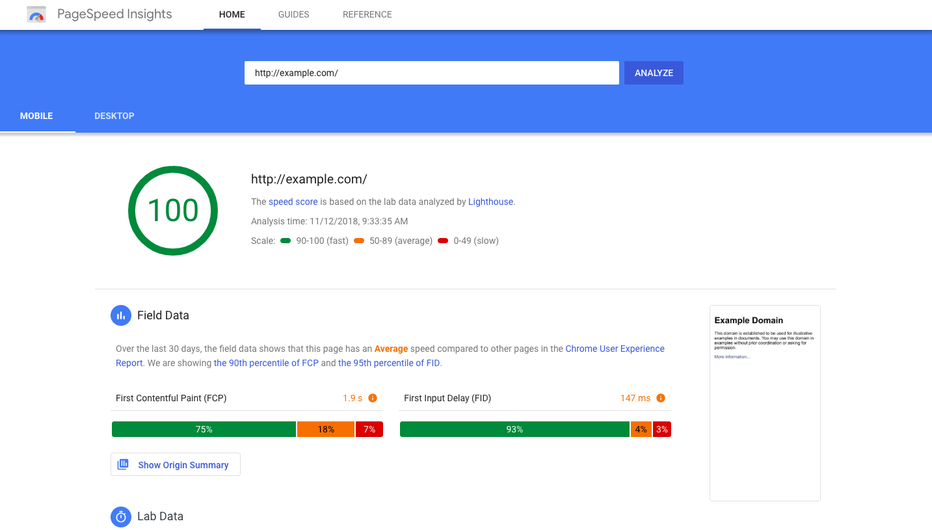
Would you wait for a page on a random site to load for longer than a few seconds? Exactly. Do not neglect your website’s speed.
You should, of course, strive for a better score but with a lot of images on the website, it might be too difficult. You want to make sure that there are no elements that are stopping Google from indexing, rendering, or ranking your website.
"Your clients have the attention span of a goldfish. Make sure your website loads fast and retains your user"
You can always use a good compression tool to reduce the sizes of your images and that will help decrease the load time of the website. For Squarespace and Showit5, you can talk to the technical team and figure out what can be improved to make sure the website has a good loading time and you aren't losing potential customers.
Be Careful About the Structure
Everything related to SEO is basically we make your users' life easier online. Your structure needs to be user-friendly and SEO will follow suit.
You need things to be clear. What is the website about? The navigation needs to be simple for the user. They should know exactly where they can go to find the information they need.
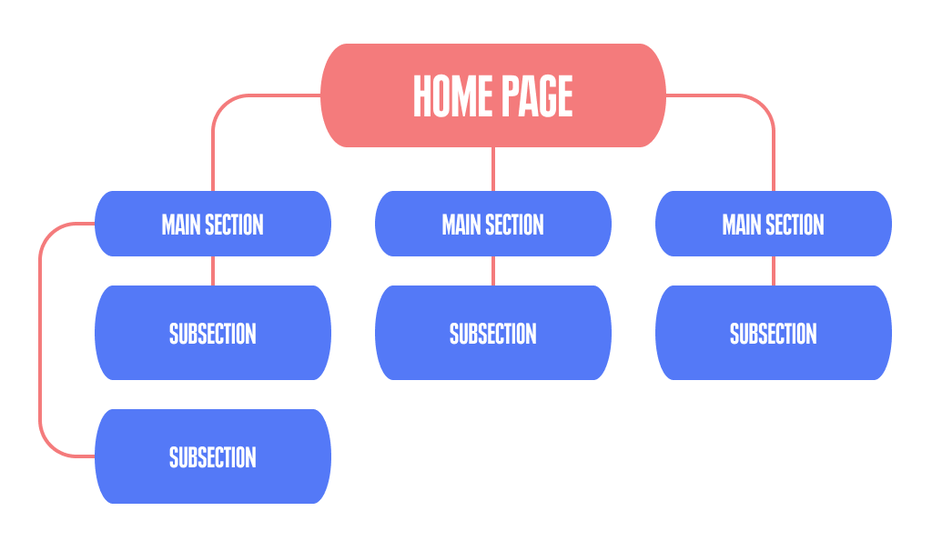
A clear website structure can actually get you places. Or, rather, not you but your users.
The first step needs to be to plan out the list of pages and their names before you get on the SEO wagon and start doing that. Take a minute and plan out the structure.
You can focus on ranking for more than one keyword and your site structure can help you achieve that as you decide which page you want to use against which keyword.
Use the Blog Section Wisely
You can even use your blogs as separate content resources (WordPress only). They have all the elements required to become independent resources on separate topics for your potential customers. Most people don't realize how important blogs are when it comes to ranking on Google. They give you an option to build on content and keywords month over month and establish your authority as a subject matter expert.
So many photographers use the blog section to create a story around their incredible work instead of just displaying their photos. Users love going through a logical structure and connecting with relevant information and that will definitely help the website in ranking on Google as well.
Take the time out to map that customer journey and determine how the user will travel through the website, and where they will find what information.
Let's Talk Keywords!
You've hit the jackpot if you can understand SEO keywords for photographers and how you can use them to your advantage. After deciding on your site's structure, you need to spend your energies on keyword selection.
You want to choose keywords that are relevant to the business and you need to have a strategy to keep an eye on any new keywords that may benefit your photography website in blogs and web pages.
Begin Your Search With A Tentative / Seed List
In order to look for the best SEO keywords for photographers, you need to have a list of terms that you think are relevant to your business and people may use while they search for a photography business. You will use these terms to search for the relevant keywords in whatever tool you use.
You simply need to sit down, grab a piece of paper and a pen, and determine the following things:
- What is my business about?
- What is my profession?
- Where am I working?
You need to basically pinpoint the exact service you're offering, for example, wedding photography and the locations your services are available in.
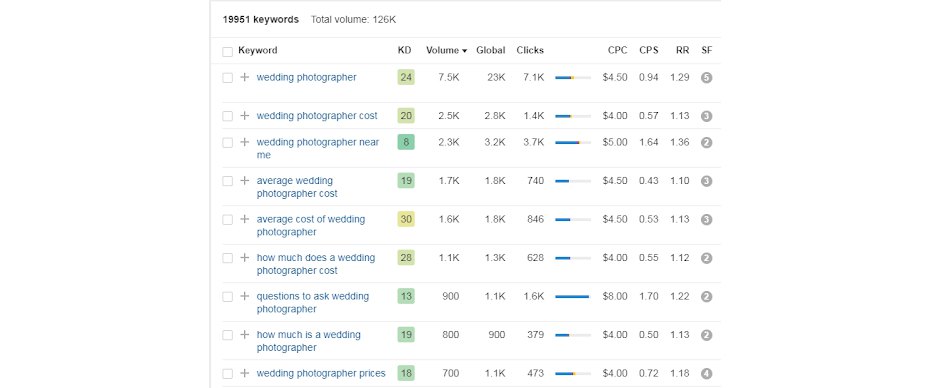
As you know, keywords are one of the crucial aspects of SEO. Choose them wisely.
Use this list to make possible combinations for keywords that you think are the most relevant for your photography business. Combine your location with services to make a list as well.
"Keywords are the foundation of strong SEO for photographers"
Check for the Usability of Your Keywords
So you've built that list, now you want to see how many people on average actually use those keywords to search for a professional photography business online. The best practice to determine search volume is to simply use the Google Keyword Planner tool.
You can also use the Moz keyword explorer.
Check Out Your Competition
One of the best SEO strategies for photographers is to make sure they choose keywords that don't have high competition. Sometimes you may find a keyword that's really aligned with your goals and the business, but so many other websites are ranking for it, that it will be very hard for you to get ranking for it.

Before you finalize your list of keywords, don’t forget to do a keyword frequency analysis.
How do you determine whether you can rank for a keyword or not? It depends on several factors like:
- The quality of your content. How well does the content address the search query?
- The quantity and quality of your backlinks
- Your user behavior, how is the user interacting with the website?
Keyword tools like the KW Finder and the Moz Keyword Planner can give you this information but you will need a paid version of these tools to search for a larger list of keywords.
Long-Tail Keywords
So by now, you should be done determining what main keywords you want to target for each one of your web pages. It is now time to focus on other keywords that you can use in your blogs and other supporting content.
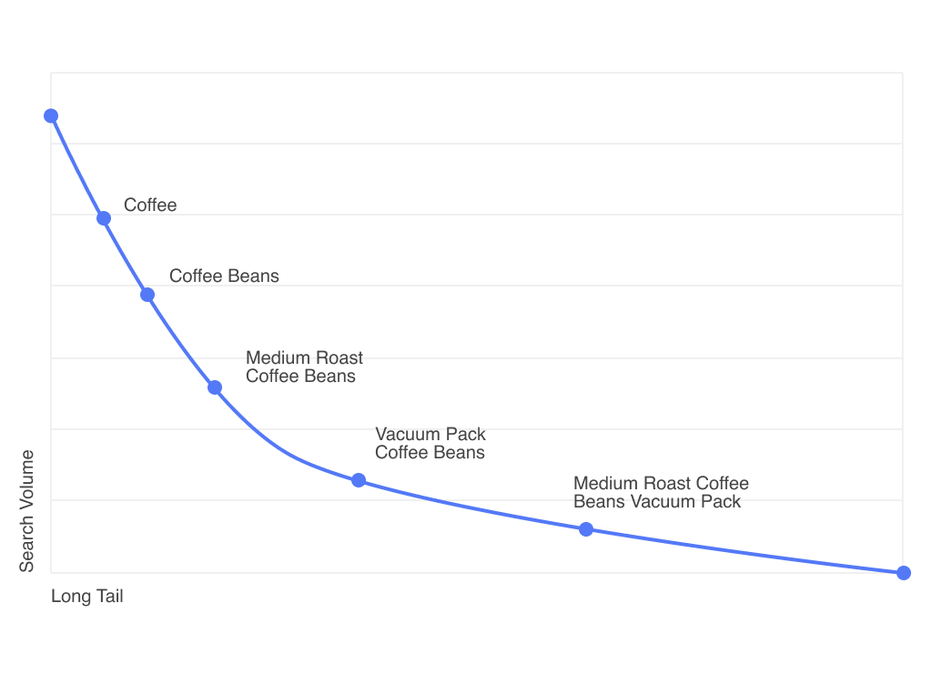
In addition to the main keywords, think about what other words and phrases you want to get ranked for online.
"SEO takes rigorous effort over 3-6 months to start ranking on 1-3 pages of Google for keywords with moderate difficulty"
If you really want a shortcut to start ranking on Google within a few weeks, you can go for long-tail keywords. They're called long-tail keywords due to a graph of keyword density distribution.
There are some terms that are popular for a business and there are some that aren't. Users search for things in unique keyword patterns and each of these keywords may not have any significance on their own but combined, they are a goldmine for your photography business and one of the best SEO tips for photographers out there.
It is possible that your web pages can rank for multiple long-tail keywords but each keyword will have only one web page shown as part of the search result because Google keeps this distribution fair and diverse for the users to choose from.
We've covered how you can tackle keywords that have a search volume when you search for them in one of the recommended keyword tools but what about those that you think are relevant to the business, yet have no search volume associated with them?
What If Your Keywords Have No Search Volume?
You may go to length to find relevant keywords and search volume for ones that people use to search for the business but what if there is no word that the people are using that really describes exactly what service you are offering. Here is where you may think that SEO marketing for photographers becomes a little trickier but you can use the following tips to get out of this dilemma.
1. Focus on Branded Keywords:
While doing your search for keywords, you may have come across a business or a photographer that has a very high search volume, even compared to other keywords. This means that this business or photographer is very famous amongst the users and they're searching for them regularly.
This can be a very hard thing to accomplish, but it can be achieved through building your brand's authority, by building really good backlinks and using traditional sales like billboards and radio to have people search for your name and business online.
2. Intercept other Searches:
We know that sounds a little stealthy but hear us out. You need to find out what your target audience is searching for and mold it to connect to what you ARE offering. For example, almost 200 people may be searching for traditional wedding venues in an area. Now how do you get those 200 people interested in your website? You simply target them through your blogs. You can write a blog titled "5 best traditional wedding venues' ' and then work in your 5 best photography projects on these venues. This is how you intercept users online.
"People use search engines in different and creative ways and you have to do the same to be able to compete with them"
Time to Explore On-Page SEO
This is where the implementation starts. You have the website structure done, you have your keywords selected, now is the time to start adding it to the content on the website.
We will reiterate this. There is no use for writing for search engines, you need to always write for the user and the search engines will follow suit automatically.
You can use your keywords everywhere on the website but there are 5 key elements of a website where it is absolutely necessary to use keywords.
Let's walk you through what these 5 key places are and how you need to use keywords for these places.
Page Title
You need to pay special attention to the page title because this is what will let the user know about the exact topic of your webpage.
There are 3 main places where the user sees the page title:
- The browser tab
- The search engine results page aka SERPs
- Shared links
This means that the page title has two uses:
- It encourages people to click the link and view the page
- It lets the user know the topic of the page

To click or not to click? The importance of a good page title cannot be emphasized enough.
Writing page titles is tricky because you have to make sure you achieve the above-mentioned goals, adding the keyword and also staying within the character limit which is limited to 117 characters but the recommended count is 55-57 characters.
Just so you know - Google can rewrite your page title to add the name of your business before the title you've written. So we would recommend that for a photography website when you write the page title for a webpage you use your business name first and then the main keyword.
Page Titles for Blog Posts
The case for blog posts is a little different because you want to be creative with these titles. You need titles that people will be enticed to click. The title needs to accurately describe what the blog is about and the value it will add for the user. Get descriptive and use long-tail keywords and test out different layouts for these titles.
Meta Descriptions
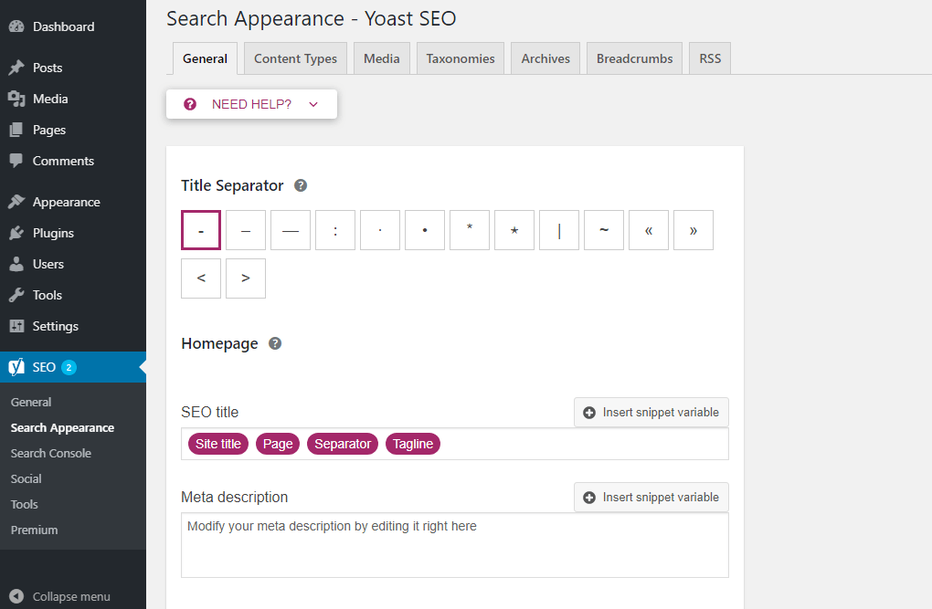
Meta description should contain a concise but interesting summarization of what the web page is about.
Meta descriptions are not picked up by Google when it's deciding to rank your website. However, it is a requirement for search pages and it presents your pages and their information in a quick and easy-to-read format for the user before they even click on the link. It could well be the content that encourages users to read your content.
You don't have to stuff your meta description with keywords but you can add one main keyword in it to optimize it and maintain consistency in the content throughout the page.
The length for the meta descriptions can vary based on different factors however the ballpark character limit is 150-160 characters.
"Each page on the website should have a unique title and meta description including your blogs"
Headings H1-H6
One of the most beneficial areas where keywords can be added for a photography website are the headings. We often come across so many websites that are missing an H1 and an H2 and so on.

Headings are the most eye-catching part of any text. They also organize it in a way that makes it easier to read.
Headings optimization is one of the best SEO strategies for photographers out there. Not only are headings a great way to make content more digestible for the user and give it more structure, they are also useful for designers and developers when they're building the website.
Headings are indicators of what content is to come next and they allow the user to understand the context of the content as well.
You don't need to spend too much on all the headers but it is necessary that you have an H1 tag and that needs to be similar to your page title.
The Main Body Copy
Now, this is where things get a little tricky because, for most other businesses, they usually can talk at length about what they do and have text to add to the main body of content but what about a photography website that's focused on imagery and doesn't really have paragraphs to describe what they do?
Of course, there is image SEO for photographers that we will cover later on but what about the main copy? The biggest mistake a photographer can make while doing their SEO is not including the main body.
As a rule of thumb and the recent Google Updates, you need to have at least 400 words worth of copy on each page in order to get ranking. Even 400 words are minimum, the count can go up to 2000+ words when it comes to Google's preference for content.
The reasonable target for a photographer should be 500-700 words at max to have a healthy text to image ratio.
We certainly don't recommend that you start adding fluff and irrelevant content on the website just because you want to meet the Google standard. But, you can find content to include in the website so that it's not only composed of images.
URLs
The page slug or the page URL should have the exact main keyword that you are using across the title, main body, and the meta description of the page.
Don't get too worried about this. You don't have to add the exact keyword or use lengthy words in the URL. You can simply just make sure that the URL gives an indication of the topic of the page.
Keep the URL as short as possible and add in the main keyword to help the user make sense of it and also connect it to the page's content.
If you need help structuring your URLs, you can check out this informational resource by Moz.
"On-page SEO is all about making sure that you have consistency in your information and you focus on quality content related to your business. You need to be intentional about adding relevant content for users and search engines"
All About Image SEO
And now the most important part of SEO for photographers, *drumroll* image SEO. As a photographer, most of the content on your website is images, possibly hundreds of them so you need to understand how you can use these images to rank on Google.
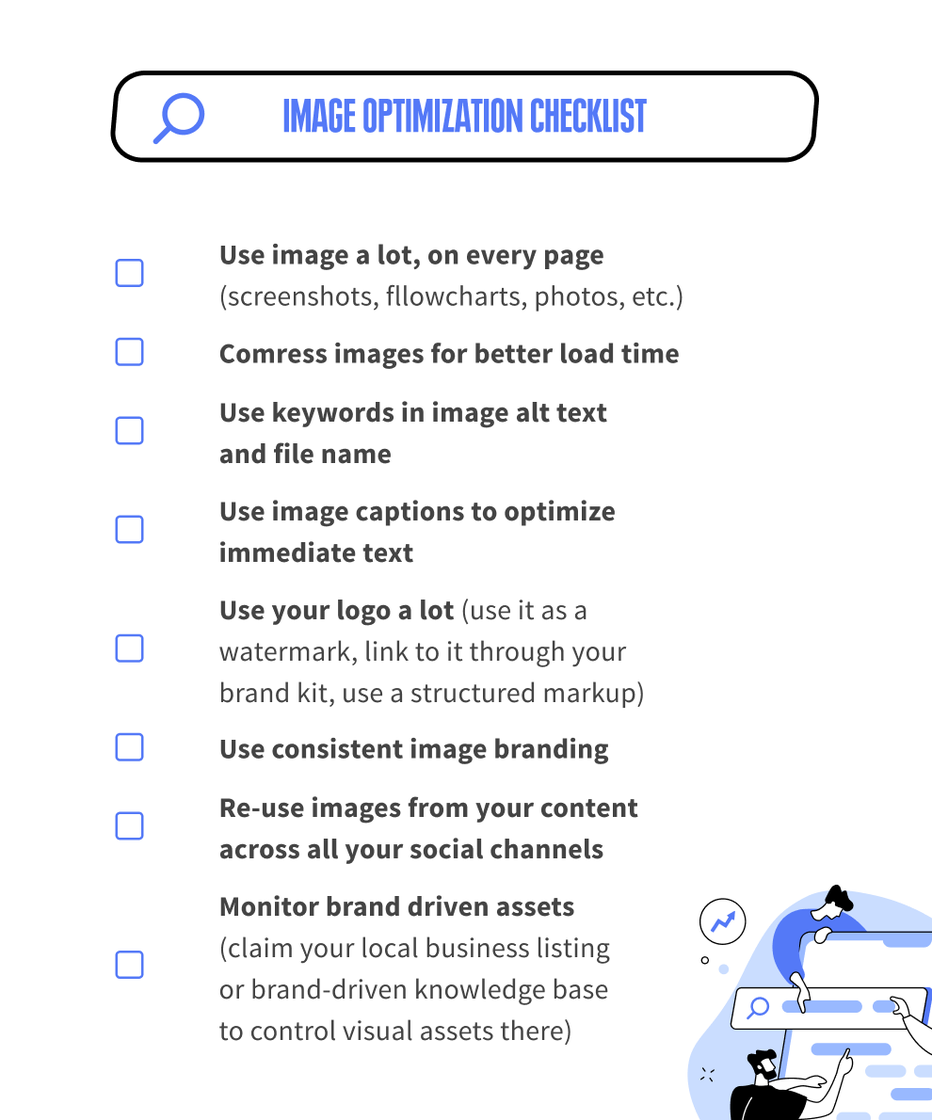
A photographer knows about the importance of images better than anyone else. Use these tips to optimize the photos on your site.
Here are a few steps you can take to ensure that your images are fully optimized for search engines:
Optimize Your Image File Size
Remember, we talked about optimizing the loading time for your website? One of the biggest factors that affect page loading speed and make your website load slower is the use of large image files on your photography website.
Here's the deal: The images on your website should always be lighter than 300kb. You should aim for a maximum of 150kb just to be in the safe zone.
You need to keep in mind that there are some platforms and CMS that actually compress and optimize file size on their own so you are okay with uploading full-sized images. You need to first confirm if the CMS team is handling this for you or not and that the quality of the images and the size is according to your expectations or not.
Optimize File Names
In a perfect world, you would have a unique file name for each photo that you upload to your website as a best practice for SEO for photographers. And, we believe you can do it for a page that has 3-6 images on it but what about a blog post that has more than 50 images? It seems kind of impractical right?
The best practice is to export them from your post-editing software like lightroom with unique sequence names.
Don't spend too much time here, just make sure the names are unique and they show exactly what the image is about.
You do not need to spend time re-naming each image individually. The file name is not a very important factor when it comes to image SEO for photographers. Find a way to do it in an automated and easy fashion, otherwise, don't sweat it.
Optimize the Alt Text
Alt-text is short for alternative text and this is a feature that allows people with visual impairments or people that have images disabled in the browser to know exactly what the image is about, without looking at the image.
"You can write the best alt-text if you simply think of it as describing an image to a blind friend"
This is a great place where you can get descriptive about the picture and also include long-tail keywords. If you can add the main keyword naturally to the alt text then kudos to you!
"Use a unique alt text for each image on the website"
Note: Alt text is also shown when these images are searched for on Pinterest and Google Images. They are a very good way for turning your images into content that can help you rank on Google.
Surrounding Content
Google tries to find connections between every piece of content on your website. It looks at the image and the content right below or adjacent to it to see if it's connected to the image or not. It also takes into account the links to the image and shares to social mediums like Pinterest.
Use Blogging To Your Advantage
We see so many photographers that don't really understand the importance of a well-managed blog. A good and regularly updated blog can be a valuable asset when it comes to SEO for photographers.
You can use it to showcase your beautiful work and also to start ranking for long-tail keywords on Google.
One of the best things about a blog is that it's dynamic. This means that you can add fresh content to it every week or month and that will allow you to keep your website updated with fresh keywords and content all the time.
Having a blog comes with great responsibility, you need to have a schedule and stick to it and it will only be beneficial for you if you do it regularly.
If your website is built on WordPress then the best option to optimize your blogs for SEO is to use the Yoast plugin. It will allow you to tick all the right boxes to get your blog noticed by Google.
Let's look at how you can structure your blog for the best SEO results:
Blog Titles
Your blog page title should be exciting and encourage users to read more. A lot of photographers make the mistake of adding their main keyword to the title. This is one place where you really want to use semantics and get descriptive and hence, a great place for your long-tail keywords.
Get creative with your blog page title and entice the user to click on the link and read more about what you have to say.
Blog Structure
We have talked at length about the importance of writing for the users and not the search engine. If your content doesn't add value for the user and doesn't answer their questions in the most comprehensive way, then Google will not consider it worthy of being in the top search results.
The best practice is to have a bare-bones structure of your blog and a list of all the information that you want to include in it. Here are a few blog SEO tips for photographers:
- Write short and easy to understand sentences
- Write in simple language and avoid using too much jargon
- Make sure you use keywords in the headers
- Divide the content into different sections with their own headings
- Make sure each section connects to the other to maintain the harmony of information
- Add links to relevant content within the website
- Add external links from websites with good domain authority
These tips should give a good starting ground to write blogs that are user-friendly and if the content is user-friendly, it's search engine friendly.
Local SEO
Also known as Map Pack SEO, local SEO is a set of steps you will take to ensure that you are in the top map search results on Google Maps.
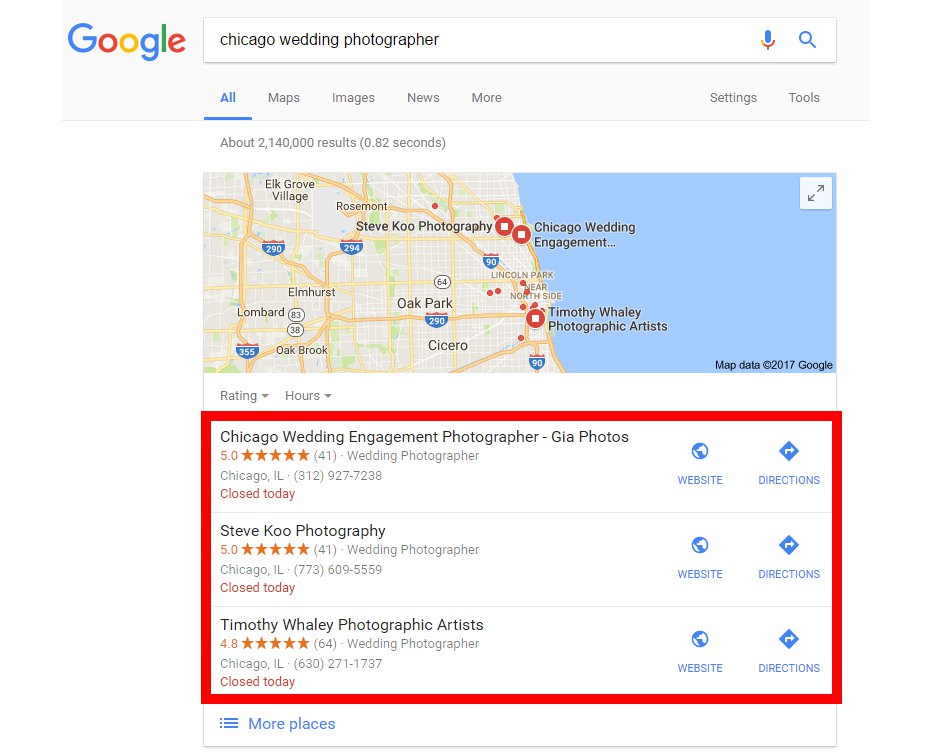
If you want to show up for all local users, don’t forget to work on your Google Maps profile.
SEO for Google Maps is very different from search engine SEO. Local SEO ensures that your website is accessible to local users in your vicinity. There are some factors like the location of the user that you can't control but you can take steps to ensure you are ranking locally.
NAP - Name, Address, and Phone
Are you tempted to take a nap? We are too, but this isn't the same nap. When it comes to SEO for photographers, NAP simply means your updated business name, address, and phone number.
"Your business name, address, and phone number need to be the same all over the internet"
We cannot emphasize this enough, consistency in information should be your utmost goal here. Use the same information everywhere you use it and every time you use it.
This will make it easy for search engine crawlers to list all the places you are using this information in and that is crucial for your local citations.
Now, we understand that not most photographers operate out of their homes and their office address is the same as their home address. And we also understand that you don't really want your home address displayed across the internet.
However, you need to understand here that if you want to compete with other photographers online and want your brand to be in the top searches on maps, then you need a physical address that Google can verify and list on the map.
If you can't achieve this with your home address, you can always rent out a meeting space or a co-working space for this purpose.
Don't be too smart about this and list a UPS store box or a P.O box as an address. Google is on the lookout for these and if someone ever reports your address as incorrect. Your business will likely be removed from Google entirely and that's too high of a price to pay.
Local Listings
Google has its own criteria for determining whether a business is an authority in the local area. It will definitely not list a business on the top search results on the map if the business doesn't exist on the address given.
"Google will look at all available checkpoints online that verify your address for it"
Local listings are your best friends because they will give you the right opportunity to list your address and other key business information. Just like social mediums, you can dominate search results if you can regularly update your business information on these local listing platforms.
Some of these platforms will allow users to actually review your services and that will be crucial for your potential customers. They can view how other people have rated you and your services when they're making a decision to hire you.
There is a long list of local listing platforms out there but the following are the most relevant for photographers:
You can invest in an all-in-one listing management platform like Yext if you have a rather big business and multiple locations.
Your Online Reviews
Your online reviews are essential in proving your business's worth and also improving your reputation online. It is probably the first interaction your potential client will have with your business online. Google will also use the information present in your reviews to determine the authority of your business and its reputation online.
Did you know that over 8% of your local ranking comes from your reviews? Crazy right?
Keep in mind that the number of views matters but the diversity of the views and the rate at which there are new reviews coming to your profile also matter a great deal.
You should obviously maintain a high quality of service and also have a proper process through which you ask your clients to review your work on Facebook, GMB, and other platforms. Sometimes all you have to do is ask and you will find that clients will understand and give you honest reviews.
We live in the era of the Zero Moment of Truth - this simply means that people literally search for everything online before they buy it. Your photography services are actually no different. Just like you see reviews of a restaurant online before you decide to eat from it, your potential clients see the reviews of your business online to see how other people rate it.
"Make review gathering a constant part of your process"
Link Building for SEO
Let's talk about link building and domain authority in detail.
Link building covers two types of links:
- Internal links
- External links
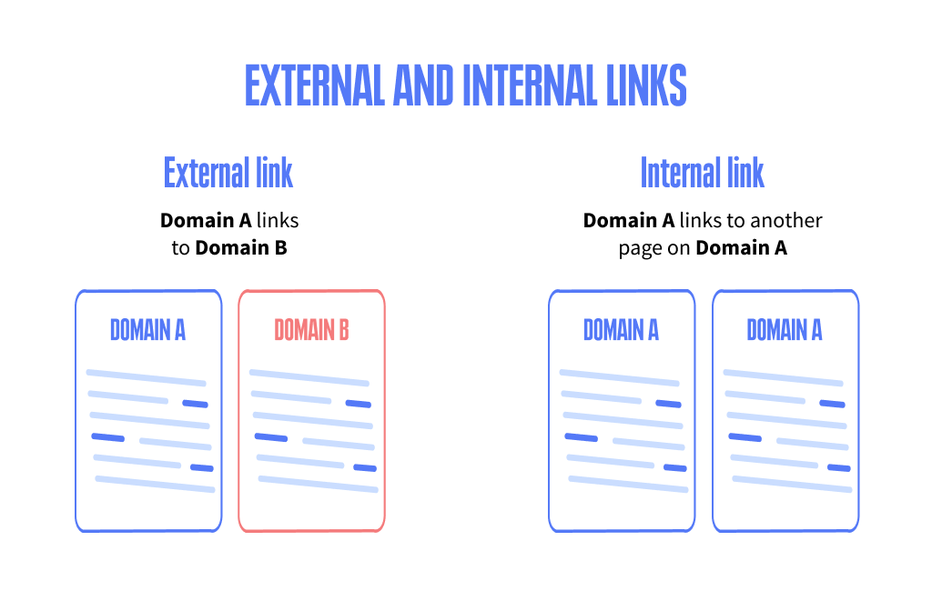
To ensure you are getting great SEO results, you should work on both internal and external links.
Internal links
You have a website, you also have a successful blog page on that website. How do you link two different yet relevant pages on your website to create a meaningful user journey for your users and also help them navigate other relevant parts of the website? You do it through internal links. You place links to other pages of your website inside your blogs, your case studies, and other web pages.
This will help create a journey within the content of the website and you can redirect a user to explore the different parts of the website instead of leaving them with an open-ended blog that leaves them no option but to drop off from the website.
You can add these as hyperlinks within the content or you can always add a section at the bottom that goes like "For more posts like this….."
External Links
External links establish you as an authority in your domain. These are also called backlinks that we've mentioned throughout this guide.
External links are like bread crumbs all over the internet that guide people to your website from other sources like directories and forums etc.
Let's look at the type of external links in detail:
Features, Credits, and Submissions
One great tip when it comes to SEO marketing for photographers is using other websites and blogs and their traffic to get traction to your own website.
The photography business and especially fashion photography and wedding photography are very popular with magazines and blogs. We see so many photographers being featured in these magazines and blogs and we've also seen these photographers benefit from it.
The correlation of a ranking on the first page of Google with a feature in a magazine or a blog is pretty high and this is one thing we think you should absolutely take advantage of.
There are different magazines where you can actually submit your photographs too and they will feature those and credit you for them.
You can also do regular guest posts and we will talk about that in a later section but they can also help boost your SEO.
Local Vendors, Influencers and Businesses
Word of mouth matters and you can increase this word of mouth by building meaningful contacts in the local community. There are plenty of businesses that need real pictures and you can help them out with some in exchange for photo credits on their website.
This kind of exposure and mention may not get you direct business but it will help you build good domain authority as it will increase awareness of your brand and service in the local community.
Here are a few simple services you can offer in exchange for a link on another authority website:
- You can offer to do a profile picture or a headshot of a business owner
- You can offer a free photoshoot to an influencer for a shout out ( more on this in a later section)
- You can cover a local event and send photos to a newspaper or local channel
- You can capture landscapes and monuments and upload these photos on platforms like freepik and unsplash etc.
- You can partner with a local magazine that needs photos of the area on a regular basis
Industry Specific Directories
There is a reason why this advice is at the very end of this section. This is because most local industry directories are completely useless and a waste of time and there is plenty of content on the internet with SEO experts discouraging you from spending any time on this step.
However, there are some directories in the photography industry that can be valuable when doing SEO for photographers.
If the directory is relevant to the photography industry then it makes sense for your business to be in it and that will count positively for your SEO.
Being a part of one of these directories won't harm your SEO so you can take the plunge and get listed and see what happens.
Let's Get Social!
People still underestimate the power of social media. Yup, even in a world where social media has caused revolutions in countries, we meet businesses that don't understand its worth and simply think that it's all marketing and PR. No, it's also great for SEO!
How? Well, we explained the power of backlinks to you. We explained how it is so important to have content regarding your services on other websites and platforms. Social mediums are just another category of those platforms.
They offer you a great place to get creative with your content and use keywords relevant for that medium to rank on that medium.
Having properly set up social media profiles can send indicators to Google that you're a reputable and genuine business with a genuine customer base that interacts with you and leaves you valuable feedback and reviews.
Optimize Your Social Media Profiles for SEO
Whether you are a new business that is just setting up their social media profile or an old one. You need to optimize and align your social media profiles with your SEO efforts.
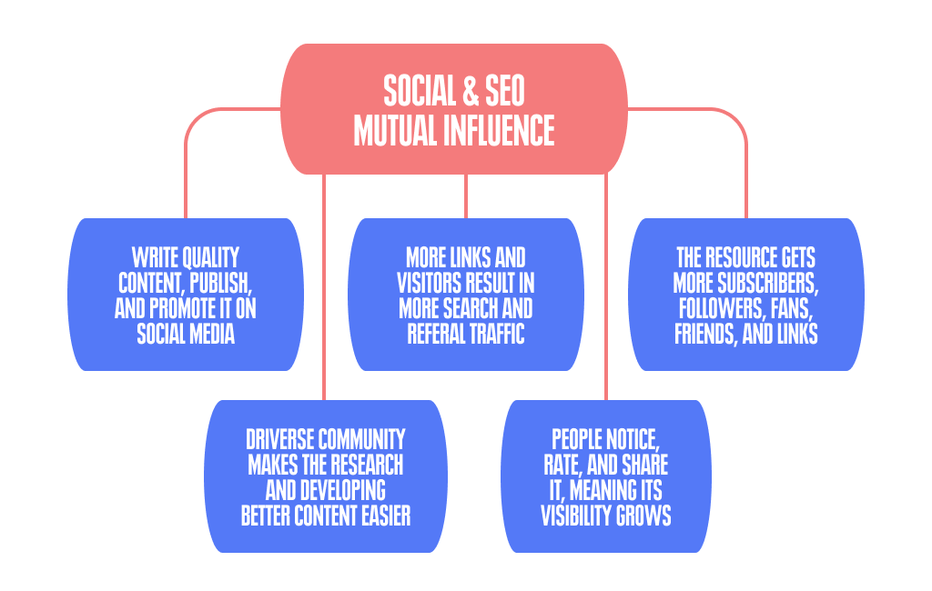
There are many ways to improve your social and SEO influence online. These are only a few of them.
These are some simple and quick steps you can take to do so:
- You must have written a meta description for your website home page or an intro. Use the same text in the "About" section of your social media profile.
- Make sure that the name, address and phone number on your profile is the same as the ones mentioned on your website and other listings throughout the internet.
- Use the same address and phone number when you are prompted to verify your social media profiles.
- Add a link to your website on every one of your social media profiles.
- Allow people to review your business. These will appear as rich snippets in SERPs.
When you spend the time to optimize your profiles and set them up the right way. You will see great results. Your profiles will also appear in the SERPs as will your websites.
Mentions and Shares From Your Website
There are plenty of plugins out there, specially for WordPress websites that allow you to install share buttons on your website for different social mediums.

Share buttons are probably one of the most useful plugins out there!
While you may do this to get an increase in likes and shares but remember that unless you're photographing something that may pique the interest of the general public. You might not get a lot of mentions and shares on social mediums.
You can do a competitor analysis and look at other photographers that seem to be doing really well on social media and mimic their strategy for starters. Be unique in your own way and chances are that if your work is outstanding, it will get shared more often than you think.
Reporting
What good is all the above effort and time spent if you can't analyze how you these efforts are translating into more visitors and eventually more business for you?
You need to be able to make informed decisions and changes to your website based on the data gathered by tools like Google Analytics and Search Console. Let's look at some basic reporting tools and how they help you make sense of your efforts:
- Google Analytics: Analytics gives you real time data on metrics like your traffic, how many users are coming to the website and from what mediums? How are your users travelling through your website, what is the bounce rate and the average time a person is spending on your website, and what are the most visited pages on your website.
- Google Search Console: We've mentioned the Google Search Console quite a few times in this guide. It is a platform that will help you communicate with Google. Find and fix any errors or issues that may be blocking you from getting ranked and indexed, view what keywords are being used to access your website, fix and adjust your internal and external links. You can also integrate your Google Analytics with your Search Console for more uniform reporting throughout.
- CrazyEgg or HotJar: Both these tools are heat mapping tools. Heat Mapping is a technique that allows you to capture videos of how the users are actually behaving on a website.Through this, you can easily see which areas of the website are being preferred by the users over others.
This data collection gives you the opportunity to measure what SEO strategies for photographers are working for you and what aren't. You can determine which kind of content and what parts of your website are doing well and how you can use the same kind of content to optimize the rest of your website.
The best way to measure your success month over month is to select metrics that you want to monitor and then keep tabs on their performance.
Here is a Data Table that shows all kinds of KPIs you need to track for a photography website:
| KPIs to Measure | |||
| Organic Sessions | Keyword Rank Increase | Leads / Conversions | Bounce Rate |
| Pages / Session | Average Session Duration | Page Load Time | Top Exit Pages |
| Crawl Errors | Backlinks | Organic CTR | Branded Vs Non-branded traffic |
There are a few other things that we think you can do to boost your SEO and get traffic to your website.
Collaborate with Your Peers
Nothing beats good contacts and good relationships, its perhaps one of the most effective SEO tips for photographers. Our guess is that you are a part of a photography club or a Facebook group for photographers.
You need to make a list of all the photographers that aren't near you locally and then decide which ones you want to collaborate with.
You can simply choose a fellow photographer in another city or country and mention them in one of your blogs that's related to their kind of work.
This might encourage them to give you a mention or add your website's link to theirs too or someone else in the same group may be inspired to do the same for you.
It's a goodwill gesture that will increase word of mouth about you and also get you a healthy backlink.
Collaborate with Influencers
This is the era of Influencer marketing. Influencers are so famous because they seem to be regular people that invest time and effort in their social media and become brands. They're more relatable for us than the celebrities we see on television and we get inspired by them.
This is exactly why, as a photographer, if you can partner up with an influencer, you can benefit from their huge following on social media.
For example, if you are a wedding photographer, you can offer to do a wedding shoot for an influencer for a discounted rate or for free. The influencer can mention your website when she posts these photos and even leave you a great testimonial (more on that below).
This is how you access their thousands of followers and become a household name in the area.
Have a Process for Gathering Testimonials
We've mentioned this before in the reviews section but we feel like this is something we need to expand on.
Clients will love you for your services and appreciate you for them verbally but a good tip for SEO for photographers is to have them write these down as reviews on your social media or Google My Business Profile.
You can take these reviews and add them to your homepage for showcasing purposes. This will give more validation to your services and help potential clients develop trust quickly.
You should have a process for taking testimonials after each job has been completed successfully.
"Encourage your customers to give you a testimonial on their social media profiles while linking to your website"
Use Your Expertise to Write a Guest Post
Guest posting is quite popular in the world of SEO. There are entire marketing firms that offer guest post writing services.
Let's explain what a guest post is. This is an article or a blog that you will write for someone else's website and use it to link to your own photography website. These are one of the most high quality backlinks out there and they can help you achieve results quicker when it comes to SEO for photographers.
It's a win-win situation for everyone. The website owner will be happy to get free and authentic content from an expert and you will be happy to receive a boost in your traffic and domain authority numbers.
The world of guest posting is so big that once you enter it, there rarely isn't any topic that you can't touch on when it comes to photography.
You can write a series of guides for new photographers. You can partner up with food bloggers for food photography tips and tricks. You can partner with cloth brands and mommy bloggers and so on.
There is no stopping you when you start discovering the kind of content you can produce for different kinds of websites.
There you have it. That's it for our detailed guide on SEO for photographers and how you can use different tips and tricks to develop and maintain a search engine friendly website.





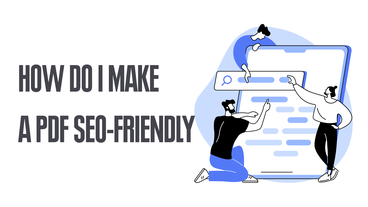
Comments